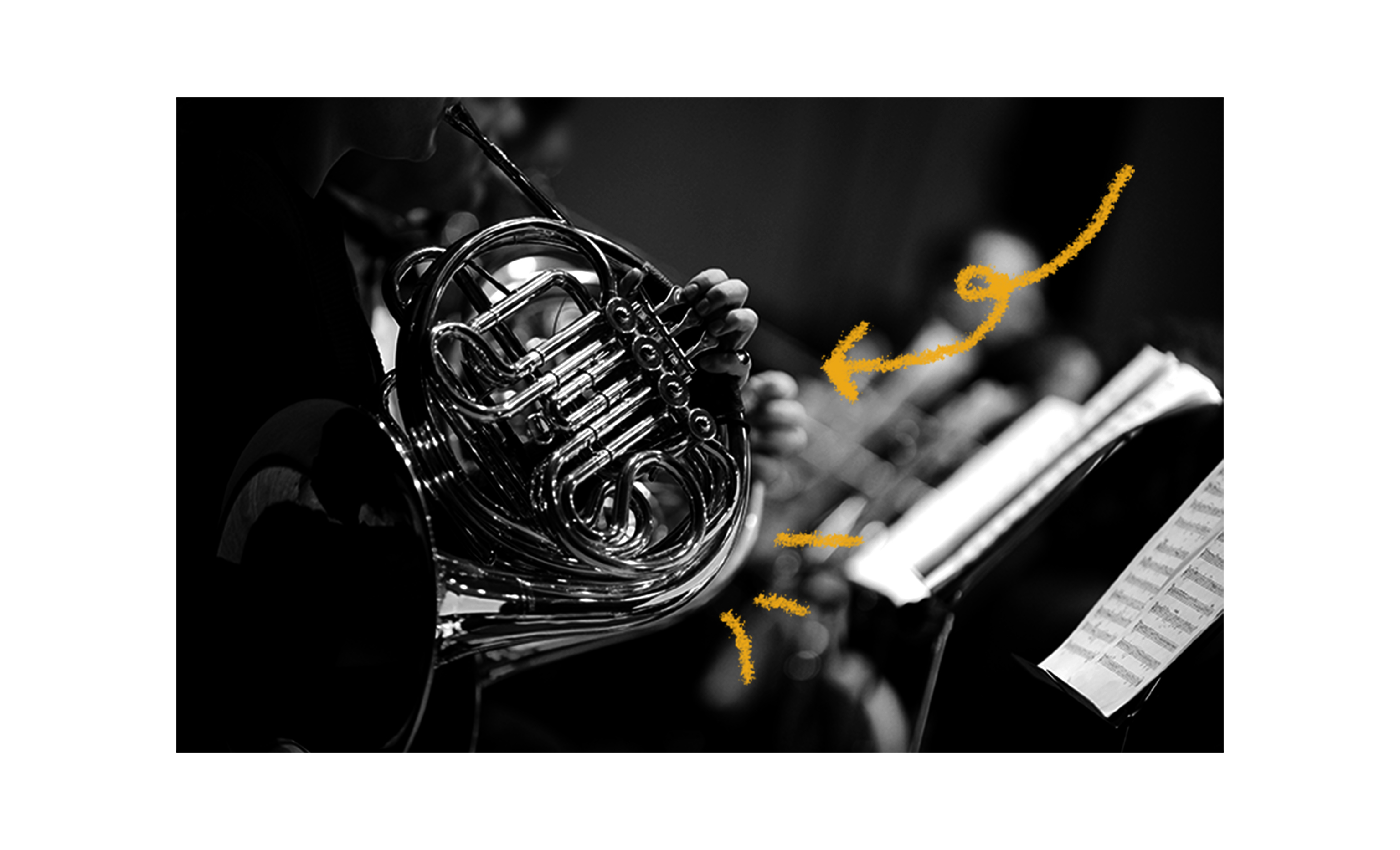The first-ever horns were animal horns. Historians believe that early humans turned the horns of their prey into musical instruments, and in fact, linguistically, the term “horn” directly evolved from various cultures’ terms for animal horns. Until the mid-16th century, the horn was used by hunters to communicate. For this reason, the body was wound in large coils so that it could be carried on a person’s shoulder while astride a horse. Over time, the horn developed as a musical instrument and closely followed the developmental path of the trumpet, perhaps since the two instruments are played very similarly. For many centuries, man-made horns existed as “natural horns” due to their simplistic structure (a large bell, a single coiled tube, and a mouthpiece). Because of this, playing musical scales was impossible, so in the 18th century, players developed the “hand-stopping technique” of placing their hands in the bell to change the harmonics. This continued until the mid-19th century, when the valve horn was developed. This horn’s length could be altered by opening one or more valves, just like on today’s modern instruments. This allowed musicians to play a stable chromatic scale on the horn for the first time. The double horn was invented at the end of the 19th century, and the triple horn was invented in the 20th century. Today, the horn is still in use and features in many popular styles of music.

Your go-to guide for weird history facts
Subscribe to the FREE daily email that makes learning about history fun.


